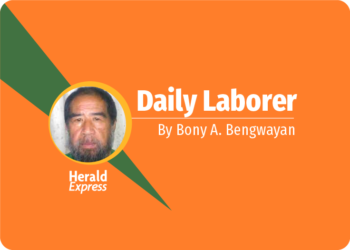Political fever is on again as the Barangay and Sangguniang Kabataan elections are set this May 14, 2018. According to the Commission on Elections (COMELEC), more than one (1) million Filipinos filed candidacies nationwide.
As the basic political unit, the barangay serves as the primary planning and implementing unit of government policies, plans, programs, projects and activities in the community. Further, section 12 of Republic Act 10121 recognizes the vital role of Barangay Disaster Risk Reduction and Management Committees (BDRRMCs) in setting the direction, development, implementation and coordination of disaster risk management programs in their territorial jurisdiction.
The Cordillera Administrative Region has experienced numerous events that led to the loss of countless lives and damages to properties which also affected development and economic setbacks.
In recognition of the realities the Cordilleran populace is facing, our local village leaders particulary the Barangay DRRM Committee is at the forefront of preparing the community and responding to the various needs of the affected population. While it is important to have a timely, effective and efficient response mechanism to disasters, it is also equally important to look at ways and means to mitigate, prevent or, at least, minimize the possible hazards of these disasters.
Local government units, including all Barangays, are mandated by law to allocate at least 5% of their annual budgets for DRRM. As members of the community, it is our responsibility to ensure the proper allocation and utilization of the said budget. Programs and activities being implemented should effectively address the local hazards and vulnerabilities.
It is also important to highlight the idea of an effective risk communication strategy at the community-level. Barangay and youth leaders in the community must work hand in hand to ensure the proper dissemination of warnings and safety advisories on potential hazards. They should make sure that community members are able to fully understand these warnings by utilizing various media and strategies.
Barangays are also mandated by law to formulate their respective Barangay DRRM Plans. These policies provide the direction and strategies on DRR implementation covering the four (4) thematic areas namely Mitigation & Prevention, Preparedness, Response, and Rehabilitation & Recovery.
The BDRRMCs should acknowledge and ensure an inclusive and participatory policy-formulation to integrate multiple views across all the sectors in the community.
Members of the Katipunan ng Kabataan and Sangguniang Kabataan are also challenged to take active role in implementing DRR programs. Given an active voice in building a ‘safer, adaptive and disaster-resilient communities’, they will surely will bring change in society and use their potential to make a real difference in times of disasters and reducing the impacts of climate change.
The exercise of this crucial electoral and political process will allow community members and voters’ alike to choose leaders who will be responsible in the provision of frontline services to the community.
We need local and youth leaders who can craft and support programs and policies that will address the vulnerabilities and exposure of communities to various hazards. Leaders who recognize the fact that DRR and CCA should be a forefront issue as a critical aspect of sustainable development.
As voters, we are urged to scrutinize our local candidate – their platforms, program recommendations and advocacies. We need to pick candidates in the upcoming elections who have adequate understanding on disaster risks and a clear agenda in building community resilience. A well-informed and proactive leader connotes a prepared community.













